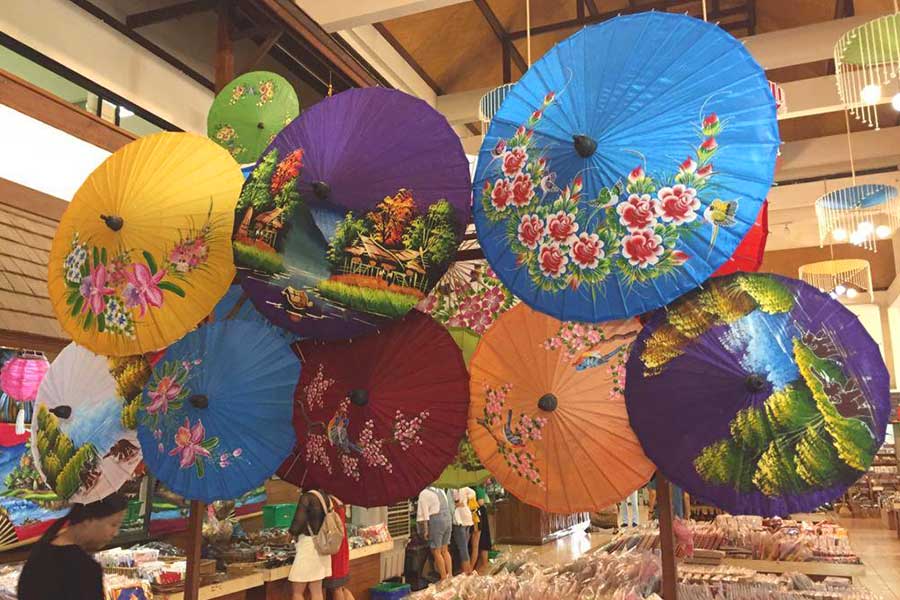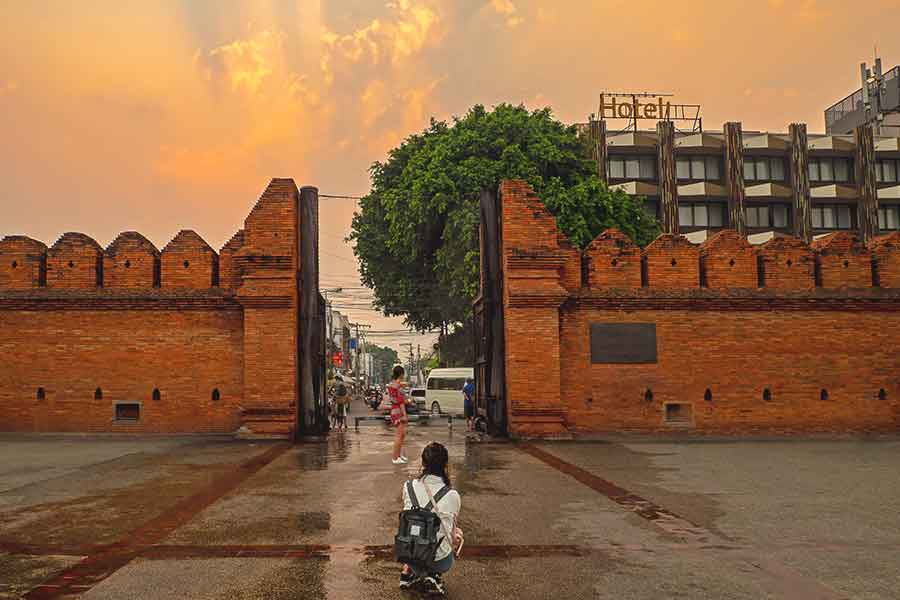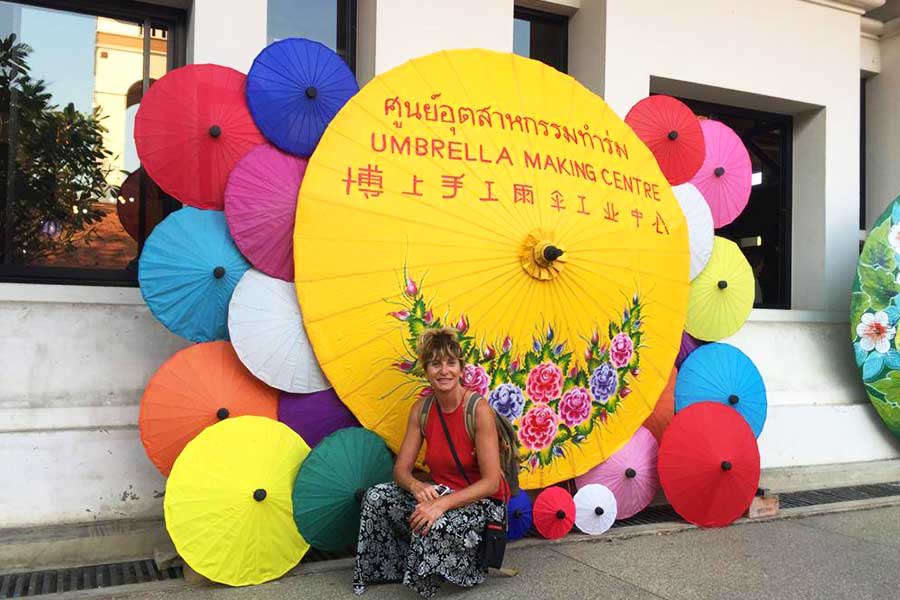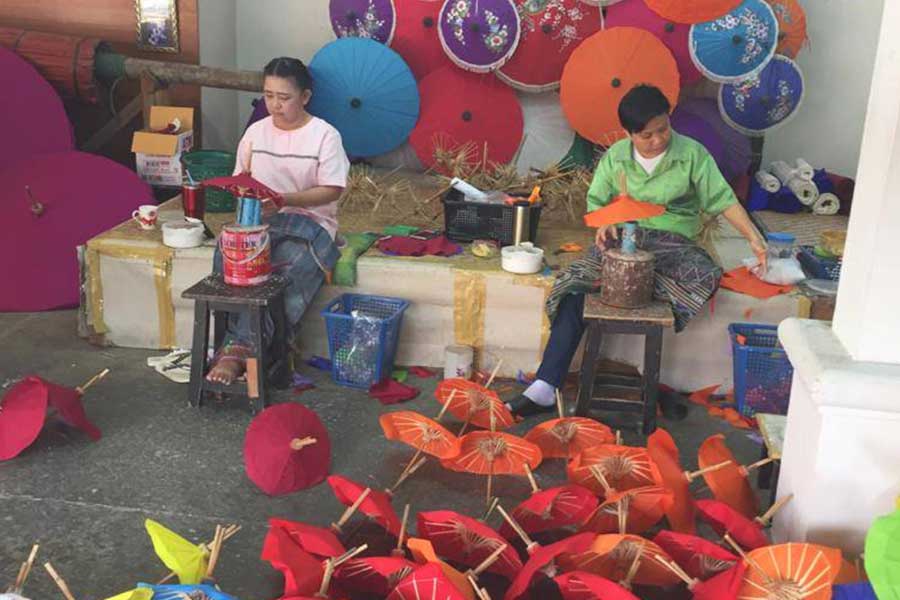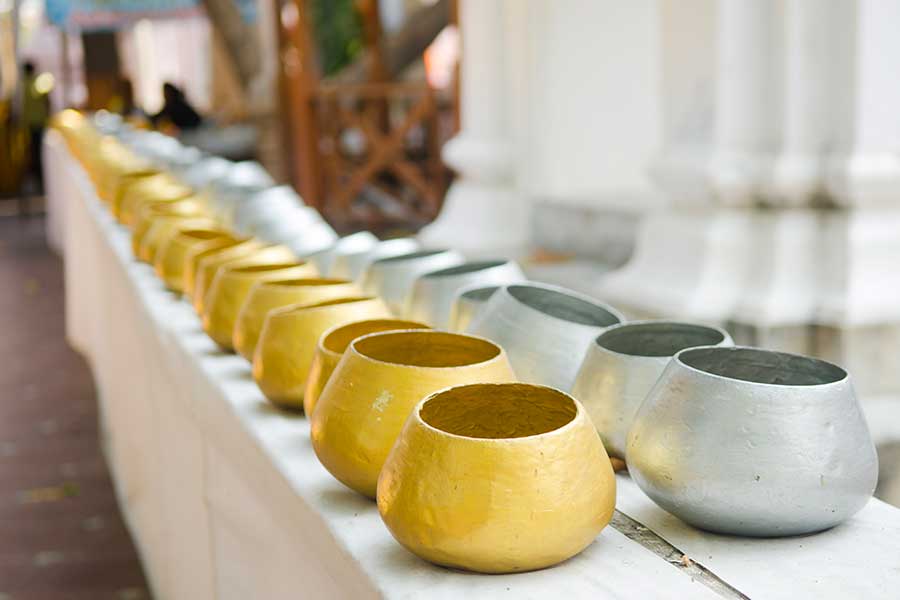Things to do
Chiang Mai shopping
Chiang Mai shopping – a quick guide to shop in Chiang Mai
Chiang Mai, Thailand is the best place to shop as there are several shopping malls, markets and riverside boutique. Chiang Mai shopping offers quality to craft pieces traditional items still sell for very little, as well as large outlets for fine antiques.
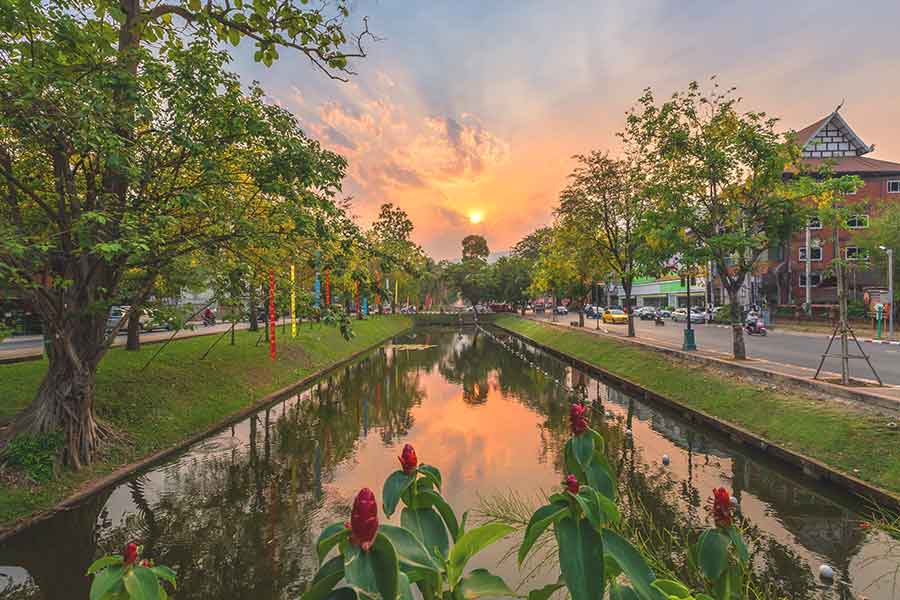
Shopping in Chiang Mai is more focused than anywhere else in Thailand.
The city is surrounded by factories and workshops where, before purchasing their goods, you can watch artisans at work. In some situations, you can even master the art yourself. You are bound to come away with some truly special souvenirs with a visit to these places.
Experiences come up in a series of shapes and sizes on a regular shopping basis.
The city houses a relatively modest array of shopping malls but a strong customer choice.
There are also several boutiques and gallery-style stores that sell paintings, antiques, and crafts. The Nimman Road area provides a compact as well as a comprehensive shopping experience, with consistently excellent value and quality of the items on offer.
Shopping is one of the reasons tourists come to visit Chiang Mai.
The city is known mainly for the Sunday and Saturday markets as well as the Night Bazaar, which stretch around the main streets. Typically these are very busy and crowded stuff.
One of them is worth a visit to see the great selection of handmade goods and to see the local artists to play them. Seeing them perform at the market during one of the days is fantastic, but due to the huge crowd and lack of walking space, I’m sure one can get fed up with it quickly. It’s no fun getting stuck in human traffic.
In Chiang Mai, there are lots of other places where you can shop more comfortably. Some of them offer a more commercial and relaxed shopping experience; some have small shops where you can find real gems. Let’s take a look at Chiang Mai’s Best Shopping Options.
What to buy in Chiang Mai
Thailand has a rich history of crafts, developed over decades of incorporating traditional materials, indigenous technology, but also skills from Indian and Chinese merchants.
Out of those ancient skills and the availability of hardwoods, metals, and stones, raw materials (for fabrics and dyes), and bamboo and clay, modern artisans, have refined traditional techniques and now cater to their wares to the modern market. Below is a rundown of what you could find here.
In the capital of Lanna, tribal weaving and craftwork are for sale everywhere, and you can come away with some interesting finds.
Check out the innovative Sop Moei Arts at 150/10 Charoenrat Rd., the home-grown crafts and ceramics of which help to support Pwe Karen hill-tribes, or the well-known Mae Fah Luang stores (the Chiang Mai airport branch). It is part of a different charity supporting hill-tribe communities and abused women.
Many of the best art galleries and handicraft shops in town are all clustered around Charoenrat Road.
Vila Cini and Oriental Style are a few minutes ‘ walks toward the Nawarat Bridge at numbers 30 and 36; both have beautiful silk collections racks and tasteful souvenirs, with some truly exceptional hand-loomed silk furnishings.
VILA CINI CHIANG MAI location
More so, up the road at Elephant Parade House are hand-painted elephants in sizes ranging from paperweights to life-like.
Fine silver work is associated with Chiang Mai, and the silversmiths that work around Wua Lai Road occupy the last remaining quarter of Chiang Mai’s artisan.
With the arrival of Kublai Khan, early smiths are believed to have emigrated from Myanmar (Burma), along with skills transferred from generation to generation. Early raw materials were obtained from coins brought by merchants, while silver is not a local resource.
Traditional bowls feature intricate elevated floral designs— the deeper the imprint, the higher the silver price (around 92.5 percent).
Some hill-tribe communities in unique traditional ethnic designs or more ordinary Western types are known for their fine silver jewelry— necklaces, bangles, and earrings. The best place to shop for all the hill-tribe handicrafts is at the Night Bazaar.
Celadon pottery is elegantly simple in the palest grey-green tones. The glaze’s distinctive color derives from a combination of local clay and wood ash.
Chiang Mai owns some of the country’s biggest and finest celadon factories. The best places to buy celadon are at Baan Celadon’s beautiful Lanna-style compound, 10 km (6 1/4 miles) out of town, or the large factory outlets.
Riverside boutique shops Chiang Mai
For the most part, shopping down by Riverside is exclusive to high-end products of quality and price. Position at Riverside means a great setting to shop in. Whether you’re searching for silk, textiles, furniture, paintings or antiques, this is a good area to come and search.
Each shop that specializes in its particular craft is renowned within the region, and in essence, it’s luxury shopping in Chiang Mai. An afternoon spent at the banks on the Ping is extremely pleasant, rubbing your hands over the many different textures and admiring the craftsmanship of some of the most professional in Southeast Asia.
Chiang Mai Riverside’s best shopping locations include a combination of markets and exclusive boutiques.
The region is rich with local handicraft shops, where one-of-a-kind souvenirs can be picked up at excellent prices.
There is a mix of styles, with influences from Burmese, Shan, Thai, and Laos, due to the proximity of the northern hill tribes.
Antique shops are popular, but there are also many markets where you can shop for everything from freshly baked sweets to flowers picked only hours ago from the mountains like a local.
If you’re searching for handmade clothing, trendy textiles, or exclusive souvenirs, then you won’t leave empty-handed as some of Chiang Mai’s best shopping can be found along the Mae Ping banks.
This guide to the best shopping spots in Chiang Mai Riverside will give you some great place ideas to launch your bargain hunts.
Baan Sanook
if you want to shop and help a worthwhile effort, we encourage you to check out the friendly folks at Baan Sanook. Selling quirky fashion t-shirts, handbags, and other small crafts, the workers here are experts in using traditional weaves and making a custom-designed fabric that is truly handmade and unique.
All of Baan Sanook’s workers (meaning House of Fun) have either a physical disability or a mental disability such a down syndrome.
Thus this company and social enterprise offer workers the opportunity to work in fair conditions, doing something they enjoy.
Their collection of elephant T-shirts is cool, with touches on the front and back of handmade weaves. Cross the River Ping to reach it, and follow signs for the temple of Wat Ket Karam. The store is located nearby in a complex known as the Healing Hands Foundation.
Pakeryaw Basket and Textile
Pakeryaw Basket and Textile are set in a traditional Thai wooden house lined in rows of creaky floorboards and tribal antiques.
It’s dusty and quite haphazard, but this is a dream come true for anyone with interest in genuine tribal things. It’s possible to find jewel headgear, embroidered belts, musical instruments, and tribal clothes at Pakeryaw Basket and Textile.
There is a small section dedicated to local brand Yellow & Blue, which makes large shopper bags for canvas.
The shop is easy to find in between the Riverside and the Night Bazaar district. Pakeryaw Basket and Textile is a lovely little shop and a real step back in time.
The best shopping mall in Chiang Mai
Chiang Mai’s best shopping is a lot different from what you’d find in Bangkok. Forget designer labels at shopping malls; Chiang Mai is the center of exquisite craftsmanship in Thailand.
It’s one of the places in the country where you can visit the workshop of a manufacturer or artist, watch the craftsmen at work and then buy the products that you just saw being made.
You can even try your hand to make them yourself in some situations.
Chiang Mai’s most famous shopping can be found at the many open-air markets in the area, with four prominent night markets to choose from.
It is important to note that not all of them are open daily, so be sure to check which day each runs on before going through town.
Best market in Chiang Mai
Night-time markets in Chiang Mai offer the best shopping options. The range and variety are excellent, and they are found scattered throughout the area.
If you’re in town on weekends, you have even more options to choose from, with all nights spent browsing, shopping, snacking, and soaking up the scene.
Many of Chiang Mai’s markets provide a much more interesting shopping experience, with stalls selling handicrafts made locally, one-off clothing items, and plenty of northern delicacies that are hard to find elsewhere.
Chiang Mai Night Bazaar
The huge Night Bazaar, an epicenter of shopping in Chiang Mai, runs from 18:00 to 22:30, every evening.
Defining where this market starts and ends is not easy, as the collection of stalls and shops varies; head to the intersection of Chang Khlan Road and Loi Khor Road, and you’ll be in the middle, with the bazaar spreading out in every direction for about two blocks.
The market offers quite much everything any other Thai night market does, just more; this means carved elephants, artwork, handicrafts, sunglasses, shoes, luggage, furniture, and homeware. Have a go to one of the hundreds of nearby bars or restaurants to wind down after your retail fix.
Sunday Walking Street
Chiang Mai’s most popular market only runs once a week, so if you’re just in town for a weekend, make sure you’re going over here on a Sunday evening.
The kilometer-long stretch is located in the heart of the main tourist area of the city and runs westward from Tha Pae Gate to Ratchadamnoen Road.
The road is closed by traffic as from 16:00 creating a temporary walking street and perhaps a huge variety of crafts, souvenirs and accessories are on sale.
Besides the shopping, the area comes alive with food vendors, makeshift bars, and massage areas on the roadside for fast foot rubbing.
Wualai Walking Street
No time for the popular Sunday Walking Street to Chiang Mai?
Then, instead, draw in the smaller’ Wualai ‘ market on Saturday.
Nevertheless, many tourists prefer Wualai Walking Street to Tha Pae Gate’s larger one, due to its excellent range of locally made items, as well as the fact that there is space for walking rather than shuffling.
The market takes its name from Wualai, which connects with Thipanet Street–just off the southern side of the old city walls.
Stalls and street vendors begin setting up on Saturday from late afternoon, with things winding down about 22:30.
Warorot Market (Kad Luang)
Warorot is one of Chiang Mai’s main food markets, offering an impressive array of fresh produce alongside ready-to-eat snacks and meals.
Furthermore, clothes and accessories are allocated to the second and third floors-most of them are not of any great quality, but at least the prices are low.
Going back to the food, look for authentic delicacies of the northern style such as sai oua (spicy sausage), called prik ong / Nam prik room (red and green chili dip) keap moo (crispy pork skin). Find Warorot Market near the river at the end of Chang Moi Lane.
Ton Lamyai Market
A morning walk around Ton Lamyai Market is a great way to kick off your day in the town for an alternative market experience in Chiang Mai.
Specializing in one thing and only one thing-flowers-this lively, the colorful market is situated next door to the larger Worarat Market, right on the banks of the quiet River Ping.
Open 24 hours a day, visiting in the morning means you’re going to escape later in the day’s heat and traffic, as well as seeing the day’s deliveries come in the lorry.
I look forward to seeing fresh, local roses, orchids, chrysanthemums, pussy willows, and lotus flowers.
Grocery shopping in Chiang Mai
There are several grocery shopping centers in Chiang Mai. The grocery centers range from supermarkets to market places.
Check out these unique and excellent places to shop for grocery items in Chiang Mai.
Rimping Supermarkets
Rimping supermarket is one of the nine Rimping Supermarkets that is usually refreshing. There is classical music to listen to while shopping and it’s never too busy.
The supermarket stocks a wide range of fruit, vegetables, fish, meat and snacks, both local and imported.
Every branch has an in-store bakery that provides a daily selection of fresh bread and pastries. We would say their bread is one of the best in town.
Also, some of the branches have restaurants in-store.
Warorot fresh market
In the heart of the Chinatown neighborhood of Chiang Mai, the busy, well-known Warorot market is the place to come and sample a wide range of ready-to-use, easily accessible northern Thai street food.
But besides, the Warorot market, also recognized locally as Kat Luang, has much more to offer.
In essence, it is also one of Chiang Mai’s busiest markets for picking up fresh and dry produce, cookware, and even a decent selection of apparel and accessories in local styles.
On the ready-to-eat food side, plates worth searching out here include gaeng hunglay, a northern, ginger-heavy pork belly curry (the Dumrong take-away rice-and-curry stall on the market has a particularly enthusiastic local follower).
Don’t forget khao soi chicken or beef curried noodles along with deep-fried crispy noodles, kanom jeen nam ngiaw rice noodles ladled with thin, gravy-like, tomato-like pork curry, nam prik room green chili dipping paste, sai northern sausages, and kap moo deep-fried pork crackling (the last two to three are also particularly worth buying for bus and train journeys.
When it comes to producing, the cooler climate of Chiang Mai means you can expect to find rarer (or at least several times more expensive) fruits on markets elsewhere in Thailand, and definitely in Bangkok, such as avocados and passion fruits.
Keen cooks might also want to pick up northern specialty ingredients such as makhwaen, translated as’ prickly ash,’ and a relative of Sichuan pepper.
Muang Mai Market
Muang Mai Market, the most exceptional wholesale market in China, offers your money worth of fresh fruits and vegetables. Only a handful of Chiang Mai markets offer a variety of goods and services and so new and mouthwatering street snacks.
You can easily take advantage of products which cost only one or two dollars. There is no compromise on product consistency.
You will find organic vegetables and seasonings at a reasonable price if you love cooking. Muang Mai is worth paying a visit out at least once, with its quality so high and prices so unbeatable.
They also offer good, fresh meat with whole herbs and curry pastes.
Somphet Market
Foi\und at the heart of the old town, the lively and open-air Somphet Market is where you should first go. It’s a market where a wide variety of fresh and organic fruits, meat, spices, and vegetables are available.
Renowned for multi-hued flower stalls, the Somphet Market is the perfect location to hang out and get some new deals.
It is a busy market where authentic Thai culture can be felt. Try some nearby restaurants to taste the popular traditional Northern Lanna cuisine.
Bargaining here is a choice you can make. The market is filled with tourist souvenirs, and tasty street food, giving the money a good run.
It’s one of Chiang Mai’s most-visited markets.
What must buy in Chiang Mai?
Nothing is ever fun like buying things you can only get when you are traveling in that country.
Thailand is no exception when it comes to matters of buying products of high quality at low prices.
In addition to the inexpensive summer shirts and fisherman’s pants, there are all sorts of products and food to take home as souvenirs.
Here are the must-buy things in Chiang Mai Thailand.
Northern Clothes
The bazaars are renowned for carrying bootleg or knock-off designer clothes at bargain prices, but if you want anything better, look for the authentic Northern Thai clothes vendors.
You can wear the popular moh hom top for something traditional that comes in the form of a men’s short-sleeved shirt or a women’s long-sleeved blouse.
This is followed by the sador, a pair of pants ending just above men’s ankles or the pha zin, a typical long women’s skirt. Try a sarong to fit into a more western style.
Essential Oils
Essential oils are highly concentrated liquids that are produced by extracting from plants, either the fragrance of healthy compounds.
Almost anywhere you can buy essential oils from plants like lavender, peppermint, and lemon balm, but if you’re looking for something different and regional, start with local coconut oil.
The two primary uses of coconut oil are for skin beautifying and cooking if you’re planning to use it for the latter, ensure it’s of an appropriate degree to use.
Just be careful to buy, as knock-off oils are popular, from a reputable vendor.
Chiang Mai Silk
Thailand is home to an exceptional type of silkworm, raised by farmers on a mulberry leaves diet. The silk created ranges of gold to light green in color.
Thai silk is usually expensive, as each thread is too thin to be used, and several threads need to be mixed by hand to create a strong fiber.
One way to tell if it is genuine is to hold it up to a powerful source of light and look at it from different angles, which should make the silk appear to change colors. Real Thai silk can also be quickly and smoothly pulled on a finger via a ring.
Chiang Mai Soap Carvings
Throughout Thailand, you can find soap carvings, but the north is particularly known for its intricate and varied designs.
The Chiang Mai night markets for these intricately carved little pieces of art are the core of commerce.
Flower designs are the most common by far, with the artists carving the form from regular soap before adding a watercolor paint. This makes for beautiful presents, in particular as part of a Thai gift basket theme.
What can you buy in Chiang Mai Night Bazaar?
The Night Bazaar is made up of countless stalls clustered along the sidewalks and spilling out into the street. You can find vendors here selling just about anything you can think of.
The collection is simply stunning, and things on sale include CDs, DVDs, clothes, shoes, Thai silk, handicrafts, wallets, watches, video games, luggage, home, auto parts statues, spices, souvenirs, samurai swords, art, jewelry, silver, antiques, and several hundred other knick-knack and goo-gah pieces that defy categorization.
Quality varies from seller to seller, but low prices almost always mean you get good value for your money.
Many stalls sell pretty much the same things as other bazaar vendors but keep a sharp eye out–if you look hard enough, you might find some truly unique treasures.
If you do not see what you want on sale, some vendors will have a small extra shop with additional wares.
What can I bring back from Chiang Mai?
When you’re coming to Chiang Mai, you’re going to have a fair chance to spend some quality time on various markets, such as the Chiang Mai Night Bazaar, Warorot Market, and the Saturday and Sunday Walking Street markets.
Many handmade items will be on display, from jewelry and hand-painted pottery to silk scarves and vessels serving silver. If you’re searching where to concentrate on spending your souvenir money, read on for some of the best things to buy in town (in addition to all that amazing food).
Chiang Mai Silverware
Wualai Road houses some of Thailand’s finest silversmiths. It is the old silver-making district of Chiang Mai and the place where you will still find traditional silver shops. you can find handmade silver bowls of different sizes, serving trays, jewelry of all kinds, and other worthwhile things that make for great souvenirs, either to keep or to send to friends and family.
Check the Saturday Night Walking Street market for a variety of options.
To keep silver products clean, put them in vinegar and fresh milk for five to ten minutes, or keep silver objects in lemon juice or tamarind juice until you see them glow again.
Chiang Mai Hill tribe clothing
One of the highlights of any Chiang Mai tour has to be a visit to a village of the hill tribes.
Traditional village clothing has become popular as a souvenir among many tourists because it is unique and handmade.
If you can’t buy any straight from their village, you can still find some handmade pieces for the hill tribe to take home. Hidden behind Warorot Market by a small street is your best bet.
Only bear in mind that anything you buy should be hand-washed instead of putting into the washing machine.
Chiang Mai Paper lanterns
Such vibrantly-hued lanterns are an important part of the Yee-Peng Festival and New Year celebrations of Chiang Mai when in a colorful display, thousands are released into the sky.
All our homes and neighborhoods are decorated with these beautiful lanterns, and you can find them in Warorot Market, usually from mid-October through February, if you want to bring one home.
Ensure that the paper is in good condition before you buy, and make sure that whatever you choose will fit in your baggage; some lanterns are easier to pack than others.
Chiang Mai Tea
We live 300 to 1,000 meters above sea level, so all year round Chiang Mai gets good weather that grows tea.
Tea has been imported from China into northern Thailand and grows high in the mountains.
Pay a visit to Warorot Market and Chiang Mai Night Bazaar to shop for almost any kind of tea you might want, including green tea, red tea, black tea, chrysanthemum flower tea, osmanthus tea or rose tea, ginger tea, saffron tea, and fruit teas.
If deciding what to buy, select tea in a box that is vacuum-sealed over tea sachets, which will stay fresher for longer.

